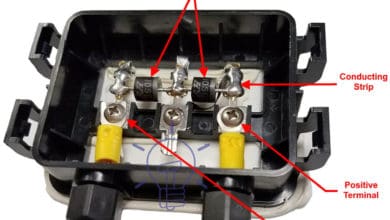Researchers Develop Magical Perovskite Solar Cell with a Record 11% Efficiency
CSIRO Scientists Have Developed an 11% Efficient Printed Perovskite Solar Cell
Sydney: Australian and UK scientists have made a significant breakthrough in the performance and flexibility of solar panels by using a magical material called perovskite.
The lightweight solar panel developed by researchers from Australia and the UK can convert 11% of solar energy into electricity, making it suitable for commercial use. Their flexibility means they can be installed on curved roofs or vehicles. An international team of scientists from the University of Cambridge, Monash University, the University of Sydney, and the University of New South Wales achieved this success by using a new technique on solar cells based on flexible rolls.
A statement from the Australian government agency for scientific research leading the project, the Commonwealth Scientific and Industrial Research Organization (CSIRO), said that the performance achieved during testing makes it a “real game-changer” for the renewable energy industry. This research represents the latest advancement in thin-film solar technology. It comes after MIT’s development of “paper-thin” solar cells in December 2022.
By using hybrid perovskite solar cell modules that consist of interconnected cells, researchers achieved power conversion efficiencies of up to 15.5% for individual small-area cells. These cells exhibited 19.9 mA cm-2 JSC, 76.1% FF, and 1.02 V VOC.
The team achieved 11% efficiency for large-area modules measuring 50 cm², which had cells connected in series. These modules showed 192 mA current output, 62.3% FF, and 4.59 V VOC in a reverse scan. While in forward scan, the efficiency was 9.96%.
They recently sent these printed flexible solar cells into space on Australia’s largest private satellite, Optimus-1, as part of Space X’s Transporter-10 mission. Eight mini-modules were attached to the satellite’s surface. Studying how they perform in the challenging space environment will help make this technology practical in the near future.
The researchers estimate a cost of about 0.7 USD per watt for producing 1,000,000 square meters per year in Australia. They believe there is potential for even more significant cost reductions based on the devices they have developed in this study.
Dr. Doojin Vak, a Principal Research Scientist at CSIRO, explains that the group created an automated system to quickly produce and test over 10,000 cells per day. This allowed the team to find the best settings for different parameters in the roll-to-roll process. Finally, they were able to determine the conditions that yield the best results.
CSIRO led a research team for this study, which included members from the University of Cambridge, Monash University, the University of Sydney, and the University of New South Wales. The study was funded by the Australian Renewable Energy Agency (ARENA).
The agency stated that these cells have been printed using a technique similar to newspaper printing, called roll-to-roll printing. Hence, it makes them capable of producing continuous energy on a large scale.
The statement also mentioned that the dramatic increase in performance has paved the way for the commercial production of flexible perovskite solar cells on a large scale.
Related Posts:
- Scientists Finally Discovered a New “Magical” Magnet
- Betavolt Developed a Nuclear Battery Has a 50-Year Lifespan
- The ONE Gemini Battery Powers EVs 752 Miles on a Single Charge
- Challenges and Opportunities of Electric Vehicles (EVs)
- IoT (Internet of Things) – Basics, Current Trends and Future Scope







